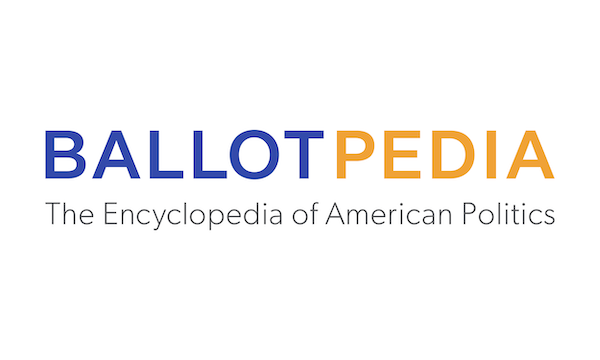BANGKOK — The first Thai national population program developed in the 1970s — around the same time the United States established Title X, a federal program designed to provide affordable birth control and reproductive care to low-income populations.
Since then, the two nations’ programs have diverged. Thai leaders largely united behind progressive family planning policies and encouraging contraceptive use, while the U.S. program has been caught in the political crossfire, tied to the controversial issue of abortion.
A 2022 Supreme Court decision overturning the federal right to an abortion has spurred other nations to mull how that change in U.S. policy, and others related to reproductive rights, will reverberate elsewhere.
Cabbages and condoms
In Thailand, he is known as “Mr. Condom.”
Mechai Viravaidya, 82, a former politician and activist, helped popularize a nationally recognized phrase in the Southeast Asian nation that condoms should be as accessible as cabbages. As such, “Mechai” has also become Thai slang for “condom.”
Advocates credit his influence as being central to the expansion of Thailand’s family planning policies, which are crafted to reduce exponential population growth and the spread of sexually transmitted diseases. In 2021, Thailand legalized abortion up to 12 weeks, then months later expanded it to 20 weeks.
Viravaidya founded the Population and Community Development Association, a nonprofit commonly known as PDA, established in 1974 to promote family planning and improve the lives of rural, low-income people through economic development.
The push to establish a national family planning program led to the Thai government, including the royal family, partnering with PDA and other community groups and volunteers.
In 2005, the World Bank estimated these interventions, as well as PDA’s small-business loans to HIV patients, helped to reduce stigma around the disease and save 7.7 million lives. Widespread promotion and availability of contraceptives led uptake among women of reproductive age to jump from about 17 percent in 1970 to 75 percent in 2022 — with a reduction in fertility rate as a result.
“Imagine if we didn’t do it. We’d have a disaster on our hands,” Viravaidya said. “The cost of inaction would have been catastrophic.”
Thailand employed unconventional partnerships, working with village workers, the police, teachers and even Buddhist monks to educate citizens about available contraception.
Oral contraceptives, which require a prescription in the U.S., are easier to dispense in Thailand. Viravaidya said they trained nurses and midwives to provide birth control. But that only covered 20 percent of rural villages. So they developed a system to train shopkeepers to dispense birth control as well.
“The villagers told us that the person they trusted most was the local shopkeeper, so they became our choice,” he said.
Similarly, hairdressers, who have a captive audience with their clients, can offer oral contraceptives to a client for a discount on a hairstyle.
Viravaidya called it “really sick” that regulatory barriers and stigma limit how birth control can be dispensed in the U.S. and other countries.
“You can’t buy pills in the shop, but you can get guns over the counter that kills. So some countries have their own idiosyncrasies,” he said.
His main focus now is his nonprofit, as well as a chain of restaurants dubbed Cabbages and Condoms — the profits of which are donated to PDA.
Cheeky signs claim “Our Food is Guaranteed Not to Cause Pregnancy.” Mannequins are elaborately dressed in colorful garments made of contraceptives.
Instead of a mint, patrons receive a condom with their bill.
Looking forward
Having historically focused on family planning, Thailand’s latest focuses include educating and protecting youth and slowly increasing the fertility rate for adults who are ready to have children.
A 2016 teen pregnancy prevention law set a target of decreasing the birth rate among adolescents ages 15 to 19 to no more than 15 per 1,000 population by 2027, according to Suwannachai Wattanayingcharoenchai, director-general of Thailand’s Department of Disease Control.
In February, the Thai government announced an initiative to distribute 95 million free condoms to citizens who receive universal coverage as part of a push to decrease teen pregnancy and STD transmission. All Thai citizens are eligible for care under the country’s universal health system.
Samut Satawichairut, an OB-GYN at Bang Lamung Hospital in Chonburi province, praised collaborations between nongovernmental organizations and the Thai government.
Thai hospitals use some government funding to recruit volunteers who can receive benefits, such as a nicer hospital room in the event of illness, in exchange for bringing health messages and policies to their community.
Satawichairut said hospitals have worked with the government on a system to reach out to postpartum teenagers to talk about contraception, for example.
Teenagers, Satawichairut said, may not feel comfortable speaking to their parents and teachers about contraception. One campaign uses influential community members to refer friends and others to a hospital for health care and education.
Three public hospitals here provide contraceptive implants, and they have been training nurses for the past year to make this available in remote areas — without any reports of additional health complications.
Domestic parallels
Implementing similar policies in the U.S. would be difficult.
Family planning initiatives — even those outside the abortion debate — remain divisive. Funding for Title X has stayed flat since a 2011 law temporary scaled back funding on federal programs, remaining at $286.5 million for nine straight years, including fiscal 2023.
While many programs have since seen bumps, Title X has not, in large part because of conservative pushback over Planned Parenthood, which has traditionally been the largest recipient of Title X funds.
Not all Planned Parenthood clinics offer abortions, and Title X funding cannot be used for abortions. Republicans have argued that because Planned Parenthood does provide abortions, it should be blocked from receiving all federal dollars.
House Republicans sought to cut funding for Title X in 1996, citing abortion concerns. Negotiations over fiscal 2011 spending also faced delays over possible cuts to Title X. And then-Rep. Mike Pence, R-Ind., in 2011 successfully fought for an amendment to defund Title X because Planned Parenthood was a Title X recipient.
“Nobody is saying that Planned Parenthood cannot continue to be the largest abortion provider in America, but why do millions of pro-life taxpayers have to pay for it?” Pence said at the time, adding that he backed the program’s support of breast cancer screenings, HIV testing “and other valuable family planning services.”
More recently, conservatives have signaled more interest in family planning restrictions. Teresa Manning, who served as deputy assistant secretary for the Office of Population Affairs during the Trump administration, has spoken out against contraception. The Trump administration, in which Pence served as vice president, also sought to prioritize abstinence-only education.
Separately, the Supreme Court has heard at least four challenges related to efforts to expand access to contraception and change funding rules related to the Title X program in the past decade.
Some worry about diminishing U.S. fertility rates. In December, Sen. Mike Lee, R-Utah, issued a Joint Economic Committee report that warned that diminishing fertility would negatively impact social supports.
But reproductive rights advocates argue Congress should increase federal funds for family planning domestically and internationally, especially as demand for contraception has increased post-Roe.
About 19 million U.S. women of reproductive age who need publicly funded contraception live in an area where it is difficult to access contraception. About 1.2 million of those women live in a county with no providers that offer the full range of types, including hormonal birth control and long-acting reversible contraceptives.
And Centers for Disease Control and Prevention preliminary surveillance data also show increases in gonorrhea, syphilis and congenital syphilis from 2017 to 2021.
The 2010 health care law made contraception available without a copay under most plans, but many individuals still face barriers to accessing family planning services because of lack of insurance and other costs.
Title X provides individuals with family planning services regardless of their ability to pay. For many low-income individuals, it may be their only source of health care. Clinics provide pregnancy testing and assistance, birth control, STD testing and, in some cases, HPV vaccines, cancer screenings and pre-exposure prophylaxis.
Advocates worry that without more funding and with some grants meeting less than the demonstrated need, some clinics will need to reduce staff or hours or even close.
“The program has never in its history ever met the demonstrated need for reproductive health,” said Audrey Sandusky, senior director of policy and communications at the National Family Planning and Reproductive Health Association. “It’s always historically been shortchanged, and we’re seeing that more and more over the past several years.”
The highest level of funding the program received was $317 million in fiscal 2010.
“I think a ninth year of stagnant funding is a dramatic cut to programs across the country,” Sandusky said. “And it’s leaving providers in a position where they’re having to slam on the brakes on any potential growth, any potential opportunity to reach new patients.”
Sawitree Wongketjai, a Thai journalist, contributed to this report.
The post Two countries, two different approaches to population programs appeared first on Roll Call.










